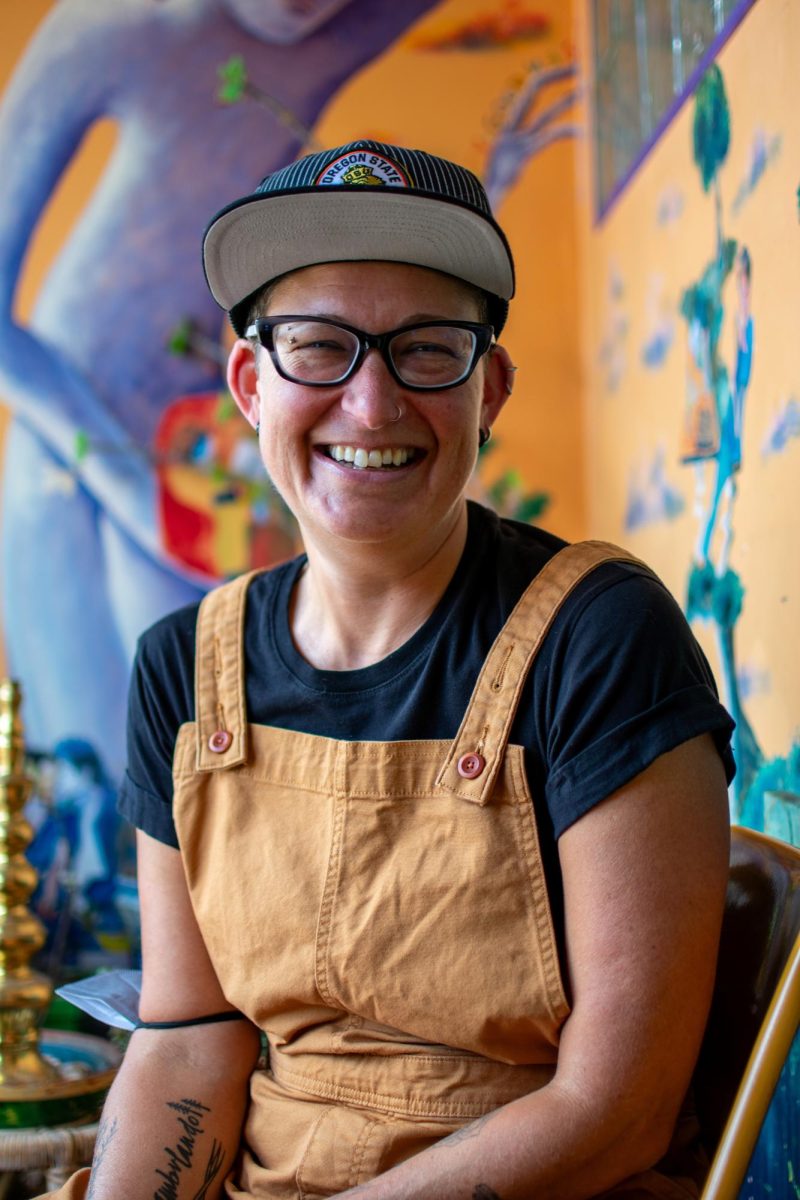Editor’s Notes: This column does not represent the opinion of The Daily Barometer. This column reflects the personal opinions of the writer.
Recently, I had the opportunity to spend time in Reykjavík, Iceland with an organization called International Play Iceland, and ended up visiting the Phallological Museum. Yes, you read correctly–it’s a museum dedicated to penises.
I’ve participated in the IPI conference on multiple occasions, where we spend time in Icelandic preschools learning how they support children in play and in the outdoors. Each time I’d walk by the Phallological Museum, I was intrigued by the name.
On previous visits, it was more of a hole-in-the-wall location, a small storefront and gift shop with a museum in the back. I had only looked in the window, nothing more.
In 2020, they moved to a newer location, more centrally located and nearly triple in size. In my new role as the OSU Sexpert, I couldn’t pass up the opportunity to stop in for a look and record an ‘on-location’ TikTok for the College of Health.
My traveling and conference companions were curious about my work as the Sexpert, and we spent time in dialogue discussing gender, inclusive language and comprehensive sexuality education across cultures. It was easy to recruit an IPI colleague to come along to the Phallological Museum with me.
With a new friend in tow to film the TikTok on my behalf, we ventured to the museum’s new location. Upon walking in the building, you’re initially greeted with a giant wooden “member” inscribed with the word “Viagra.”
The walls are adorned with a wide range of phallic artwork in multiple mediums, from serious to silly.
We got to experience the gift shop which sold a variety of novelty gifts, condoms, T-shirts and art. What you would expect at any shop geared toward tourists, but all items had a penile-theme.
We witnessed people eating phallic-shaped waffles washed down with coffees, teas and beer. Some others drew the genitalia of people assigned male at birth on large dry erase boards. It was a sight for the eyes!
Some fun facts I learned in the process of my visit were:
- The museum houses more than 300 penises from over 100 mammalian species.
- At one point they acquired a donated human penis, but the organ didn’t handle the formaldehyde well and they are again on the hunt for a new organ donor. No pun intended!
- In addition, their largest specimen is part of a blue whale penis and their smallest sample is the penis bone from a hamster.
- Despite the word “boner,” humans do not have penis bones.
So, why should students living 3,812 miles away from the Phallological Museum care about its existence? Because the fact there is a museum at all dedicated to what many consider a “taboo” body part is a step in the right direction toward using the proper terminology for all body parts.
When I was working on my master’s thesis many years ago, the fact I was exploring attitudes towards menstruation was shocking to some at the time. Periods! Oh my! Now, OSU has a period club, menstrual cups are the norm and people talk more freely about menstruation.
I’m not saying we need a Penis Club on campus, but it would benefit everyone to have more open and honest conversations about our bodies and the true names of their parts. And this is what the Museum does. Through humor, a well-endowed collection (pun intended!) and science, it’s worth checking out if you’re ever in Iceland.
For those of you assigned female at birth or interested in learning more about vaginas, there is a Vagina Museum in the United Kingdom. Perhaps an activity for a future trip of mine. Admission is donation based, but I more expected the price of admission to cost 82 cents on the dollar to the penis museum. According to the Pew Research Center, women earn 82 cents for every dollar earned by men in 2022. Skál!
If you have a query for the Sexpert, you can submit an anonymous question here.















































































































